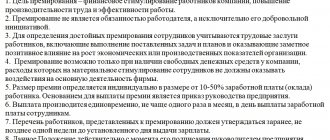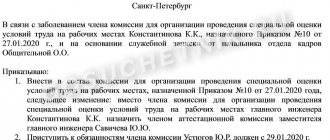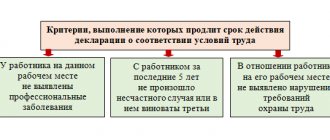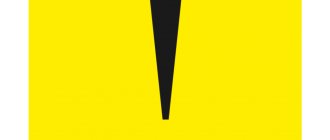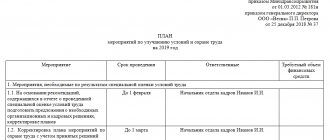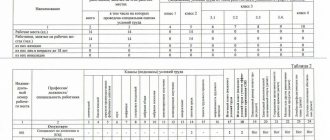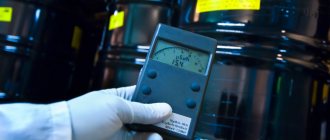Companies strive to take care of maintaining a positive microclimate within the team. For this reason, among the constant expenses of companies, one can often find expenses for the purchase of water, tea and coffee. This is not only a tribute to fashion trends, but also compliance with the requirements of current legislation. In the article we will talk about accounting for water, tea, coffee, sweets, and give examples of postings.
Having the opportunity to offer tea or coffee to partners, the organization creates a positive image and increases the likelihood of concluding a deal or continuing productive cooperation. Like other company expenses, the cost of purchasing tea or coffee must be taken into account. The accountant who will be entrusted with the responsibility for carrying out the action must know all the features of its implementation.
Accounting for drinking water at an enterprise
Drinking water is included in the MPZ. The actual cost of the product is taken into account. It represents the amount the company spent on the purchase. In this case, VAT and other refundable taxes are excluded.
To reflect the flow of water, the accountant will need to make the following entries: (click to expand)
- Dt 10 Kt (76) (receipt of water received from the supplier).
- Dt 19 Kt (76) (VAT accounting has been completed.) The action is carried out if there is an invoice containing the tax amount.
- Dt 68, subaccount “Calculations for VAT” K-t 19 (Acceptance of the VAT amount for accounting.) During the manipulation, it is necessary to comply with all the conditions specified in Chapter 21 of the Tax Code of the Russian Federation.
According to the provisions enshrined in PBU 10/99, expenses incurred by the company are divided into other costs and expenses for ordinary activities.
How to record the purchase of a cooler and drinking water
The accounting procedure for coolers depends on the category of assets they are included in - fixed assets or inventories.
Cooler included in the OS
A cooler can be taken into account as part of fixed assets if the organization:
- plans to use the cooler for more than 12 months;
- uses the cooler in activities aimed at generating income;
- does not imply subsequent resale of the cooler.
Such rules are established by paragraphs 4 and 5 of PBU 6/01.
If the cooler is included in fixed assets, write off its cost gradually through depreciation. Every month, starting from the next month after putting the cooler into operation, do the following wiring:
Debit 23 (25, 26, 91-2...) Credit 02
– depreciation of the cooler has been calculated.
This procedure follows from paragraphs 17 and 19 of PBU 6/01 and the Instructions for the chart of accounts.
Cooler included in materials
Property worth no more than 40,000 rubles. in accounting can be reflected not as part of fixed assets, but as part of inventories (clause 5 of PBU 6/01). A specific value limit for classifying property as one or another group of assets must be fixed in the accounting policy for accounting purposes.
If the cost of the cooler is less than the established amount, capitalize it on account 10-9.
The same should be done if the cooler will be used for a period not exceeding 12 months (clause 4 of PBU 6/01).
Then register the purchase of the cooler and reflect it in accounting in the usual manner prescribed for materials. For more information about this, see How to reflect the receipt of materials in accounting.
If the cooler is accepted for accounting as part of materials, then immediately after installation write off its cost as expenses:
Debit 23 (25, 26, 44, 91-2...) Credit 10-9
– the actual cost of the cooler is written off.
Water for cooler
Bottled drinking water, which is necessary for the operation of the cooler, should be taken into account at the cost of its acquisition (excluding taxes) and reflected in the debit of account 10 “Materials” subaccount 10-1 “Raw materials and materials”.
Document the transfer of water to the department with a demand invoice in form M-11 (or an act for writing off drinking water in a self-developed form). Based on this document, write off the cost of water as expenses:
Debit 23 (25, 26, 44, 91-2...) Credit 10 subaccount “Raw materials and materials”
– the actual cost of water is written off.
The bottles in which drinking water is supplied are reusable (returnable) containers. For more information about accounting for containers, see How to record the purchase of materials (goods) in containers in accounting.
The procedure for reflecting expenses for the purchase of a cooler and water when calculating taxes depends on what taxation system the organization uses.
BASIC: income tax
Take into account the costs of a cooler and drinking water when calculating your income tax.
Labor legislation obliges organizations to create normal working conditions for workers (Articles 22, 163, 223, 224 of the Labor Code of the Russian Federation). Such measures include the acquisition and installation of installations to provide employees with drinking water, for example, coolers and drinking water itself (Article 226 of the Labor Code of the Russian Federation, clause
18 order of the Ministry of Health and Social Development of the Russian Federation dated March 1, 2012 No. 181n). Therefore, if there are documents confirming the costs of purchasing a cooler and drinking water, the organization can take such costs into account as part of the costs of ensuring normal working conditions (clause 1 of Article 252, subclause 7 of clause 1 of Art.
264 of the Tax Code of the Russian Federation, letter of the Ministry of Finance of Russia dated November 16, 2015 No. 03-03-06/1/65965).
If the initial cost of the cooler exceeds 100,000 rubles, then for tax accounting purposes, take it into account as part of depreciable property (clause 1 of Article 256 of the Tax Code of the Russian Federation).
BASIS: VAT
“Input” VAT paid when purchasing a cooler and water for it should be deducted (Article 171 of the Tax Code of the Russian Federation).
simplified tax system
If an organization applies a simplified tax system and pays a single tax on income, the costs of purchasing a cooler and drinking water for it do not reduce the tax base (clause 1 of Article 346.14 of the Tax Code of the Russian Federation).
Situation: is it possible to take into account the costs of purchasing a cooler when calculating the single tax when simplifying? The organization pays a single tax on the difference between income and expenses.
No you can not.
The list of expenses that can be taken into account when calculating the single tax is closed. The costs of ensuring normal working conditions are not mentioned in it (clause 1 of Article 346.16 of the Tax Code of the Russian Federation). This means that the cost of purchasing a cooler does not reduce the tax base for the single tax.
A similar point of view is shared by regulatory agencies (letters from the Ministry of Finance of Russia dated December 6, 2013 No. 03-11-11/53315, dated February 1, 2011 No. 03-11-11/22).
Advice : there are arguments that allow organizations to take into account the costs of purchasing a cooler when calculating a single tax with a simplification (from the difference between income and expenses). They are as follows.
The cost of purchasing a cooler when calculating the single tax under simplification can be taken into account as part of:
- expenses for the acquisition of fixed assets (subclause 1, clause 1, article 346.16, clause 4, article 346.16, article 256 of the Tax Code of the Russian Federation) - if the initial cost of the cooler, according to accounting data, exceeds 100,000 rubles. (Clause 3 and 4 of Article 346.16 of the Tax Code of the Russian Federation);
- material costs (subclause 5, clause 1, article 346.16, clause 2, article 346.16, subclause 3, clause 1, article 254 of the Tax Code of the Russian Federation) - if the initial cost of the cooler according to accounting data does not exceed 100,000 rubles. (Clause 3 and 4 of Article 346.16 of the Tax Code of the Russian Federation).
Accounting for tea and coffee in the organization
Products that a company purchases for its employees and customers must be included in the inventory. In this case, the following transactions are carried out:
- Dt 10 Kt 60 (76) – the received product was recorded as inventory.
- Dt 91-2 Kt 10 – written off.
Products are accepted for accounting at actual cost. To find out, you need to refer to the contract with the supplier. The figure indicated there will appear in other company documents. As in the case of water, VAT is not taken into account.
Features of accounting for tea and coffee depend on the presence of the corresponding clause in the collective agreement.
So, if the document contains a provision according to which the organization is obliged to provide its employees with drinks and sweets, expenses for the purchase of products are classified as expenses for ordinary activities. If the products are transferred to the person who is responsible for replenishing them, the actual cost of tea and coffee is written off from account 10 to the debit of account 26. The basis for the manipulation is the corresponding primary document.
While it is possible to include water in expenses for tax purposes, it will not be possible to perform a similar manipulation in relation to tea and coffee. Tax authorities will certainly have questions regarding the legality of the action. The absence of a clause on the provision of drinks and sweets in the collective agreement leads to changes in the accounting procedure for tea and coffee. In this situation, the accountant must include the products among other expenses.
Water for cooler
Bottled drinking water, which is necessary for the operation of the cooler, should be taken into account at the cost of its acquisition (excluding taxes) and reflected in the debit of account 10 “Materials” subaccount 10-1 “Raw materials and materials”.
Document the transfer of water to the department with a demand invoice in form M-11 (or an act for writing off drinking water in a self-developed form). Based on this document, write off the cost of water as expenses:
Debit 23 (25, 26, 44, 91-2...) Credit 10 subaccount “Raw materials and materials”
– the actual cost of water is written off.
The bottles in which drinking water is supplied are reusable (returnable) containers. For more information about accounting for containers, see How to record the purchase of materials (goods) in containers in accounting.
The procedure for reflecting expenses for the purchase of a cooler and water when calculating taxes depends on what taxation system the organization uses.
Spending on water, tea, coffee: taxation features
The main problem that a company may face during taxation is justifying the costs of purchasing drinks and sweets for employees and clients. At first it may seem that spending money on buying water is inappropriate. Each office building is equipped with a water supply system and each employee or visitor has free access to unlimited quantities of liquid. However, practice shows that the water that flows from the tap is more like technical water than drinking water.
In most cases, the liquid does not meet the requirements that SanPiN imposes on it.
The expediency of spending on purchasing water can be proven by obtaining a conclusion from the State Sanitary and Epidemiological Supervision Service that the liquid from the tap does not meet the requirements of Sanitary Regulations and Regulations. If such a certificate is missing, tax authorities may consider that incurring such expenses is inappropriate.
If a company makes contributions to the state under the simplified tax system, and the object of taxation is income minus expenses, it will not be possible to take into account expenses for the purchase of water. The list of expenses that reduce the amount of profit received is given in the Tax Code of the Russian Federation. The list is closed. You won't be able to add new items to it.
If you carefully study the list, you will not be able to find the costs of ensuring normal working conditions, which include the purchase of drinking water. A similar rule applies to the purchase of sweets and coffee. To know the tax implications, you must carefully study the table below.
| Types of taxes | Expenses for purchasing tea for employees | Representation expenses | |||
| Impact on income tax accounting | |||||
| Taken into account | Accounting cannot be performed | Taken into account | Accounting cannot be performed | ||
| Personal income tax | Determine the profit of an enterprise employee: | ||||
| Can | + | + | – | – | |
| Will not work | – | – | – | – | |
| UST + contributions to mandatory pension insurance | Can | + | – | – | – |
| Will not work | – | – | – | – | |
simplified tax system
If an organization applies a simplified tax system and pays a single tax on income, the costs of purchasing a cooler and drinking water for it do not reduce the tax base (clause 1 of Article 346.14 of the Tax Code of the Russian Federation).
Situation: is it possible to take into account the costs of purchasing a cooler when calculating the single tax when simplifying? The organization pays a single tax on the difference between income and expenses.
No you can not.
The list of expenses that can be taken into account when calculating the single tax is closed. The costs of ensuring normal working conditions are not mentioned in it (clause 1 of Article 346.16 of the Tax Code of the Russian Federation). This means that the cost of purchasing a cooler does not reduce the tax base for the single tax.
A similar point of view is shared by regulatory agencies (letters from the Ministry of Finance of Russia dated December 6, 2013 No. 03-11-11/53315, dated February 1, 2011 No. 03-11-11/22).
Advice : there are arguments that allow organizations to take into account the costs of purchasing a cooler when calculating a single tax with a simplification (from the difference between income and expenses). They are as follows.
The cost of purchasing a cooler when calculating the single tax under simplification can be taken into account as part of:
- expenses for the acquisition of fixed assets (subclause 1, clause 1, article 346.16, clause 4, article 346.16, article 256 of the Tax Code of the Russian Federation) - if the initial cost of the cooler, according to accounting data, exceeds 100,000 rubles. (Clause 3 and 4 of Article 346.16 of the Tax Code of the Russian Federation);
- material costs (subclause 5, clause 1, article 346.16, clause 2, article 346.16, subclause 3, clause 1, article 254 of the Tax Code of the Russian Federation) - if the initial cost of the cooler according to accounting data does not exceed 100,000 rubles. (Clause 3 and 4 of Article 346.16 of the Tax Code of the Russian Federation).
At the same time, the organization needs to economically justify these expenses (clause 2 of article 346.16 and clause 1 of article 252 of the Tax Code of the Russian Federation).
However, following this position may lead to disagreements with inspectors. In arbitration practice there are examples of court decisions made in favor of organizations (see, for example, decisions of the Federal Antimonopoly Service of the Ural District dated October 6, 2008 No. F09-7032/08-S3, West Siberian District dated August 29, 2006 No. F04- 5469/2006(25648-A70-29)).
How to deal with VAT when accounting for costs
If a company purchases tea and sweets for employees, it is considered that a gratuitous transfer of goods occurs. This is the official position of the Ministry of Finance. Sales of products in Russia are subject to VAT. It turns out that it is necessary to calculate the tax base. However, the courts have a different opinion.
Representatives of government bodies believe that the gratuitous transfer of drinks and sweets will not be subject to VAT for the following reasons: (click to expand)
- There is no personalization of users by the product. The company does not take into account exactly who drank the tea and ate the cookies purchased for all employees.
- Tea is consumed only at work. A person cannot take a drink or sweets home. This means that there is no ownership right.
- The employer, on his own initiative, purchases drinks and sweets, expecting positive consequences - increasing productivity or creating a positive image of the company.
VAT that the company paid when purchasing drinks and sweets for visitors or office employees cannot be deducted. It can be included in the cost of purchased tea, coffee, sugar and other goods belonging to this category.
Cooler in the order of the ministry
They also refer to the order of the Ministry of Health and Social Development of March 1, 2012 No. 181n. Paragraph 18 of this document states that one of the measures to improve working conditions and safety and reduce levels of occupational risks is the acquisition and installation of installations (automatic machines) to provide workers with drinking water.
That is, it is no longer just water, but a whole cooler. And the costs can take into account not only bottled drinking water, but also the cooler, along with the costs of its installation and maintenance.
How to prove to tax authorities the legitimacy of expenses?
Some companies count the cost of purchasing coffee and tea as expenses to ensure normal working conditions. To clarify what exactly this includes, you can make an appropriate entry in a collective agreement or other local act of the organization. However, if the company indicates in the document the provision of tea and coffee to employees, disputes may arise with representatives of the tax service.
The Ministry of Finance claims that only expenses for the purchase of drinking water can be taken into account to reduce taxes. In this case, there must be a document confirming that the tap liquid does not comply with SanPin standards.
If the company wants to defend its position, it will have to enter into a dispute with representatives of the government agency. Practice shows that in this situation the courts side with the taxpayer. The arguments presented in the table below can be cited as arguments confirming the company’s correctness.
| Statement | Rationale |
| The purchase of equipment that allows the supply of drinking water and other drinks to the place of work of employees is included in the category of occupational safety measures | Resolution of the Ministry of Labor dated February 27, 1995 No. 11 |
| It is impossible to assess the validity of costs that reduce taxation from the point of view of rationality. The company is able to independently decide how appropriate certain expenses are. | Determination of the Constitutional Court dated June 4, 2007 No. 320-O-P, No. 366-O-P |
How to account for drinking water
How to account for drinking water
A.S. ELIN, Executive Director of Audit www.academ.ru
Tel. (095) – 517-37-51
Almost all companies enter into contracts with specialized organizations for water supply for technical needs. And those who care about the health of workers and their own image also buy purified drinking water. But while the cost of water for production clearly reduces the taxable profit of the enterprise, problems arise with drinking water. The fact is that tax authorities deny companies the right to write off their cost as expenses.
Is it possible to bypass the official ban? In this case, yes. The main thing is to decide how to document the purchase of drinking water, as well as confirm these expenses and their economic feasibility. How to still write off drinking water for the purpose of calculating income tax and at the same time avoid claims from officials will be discussed in this article.
